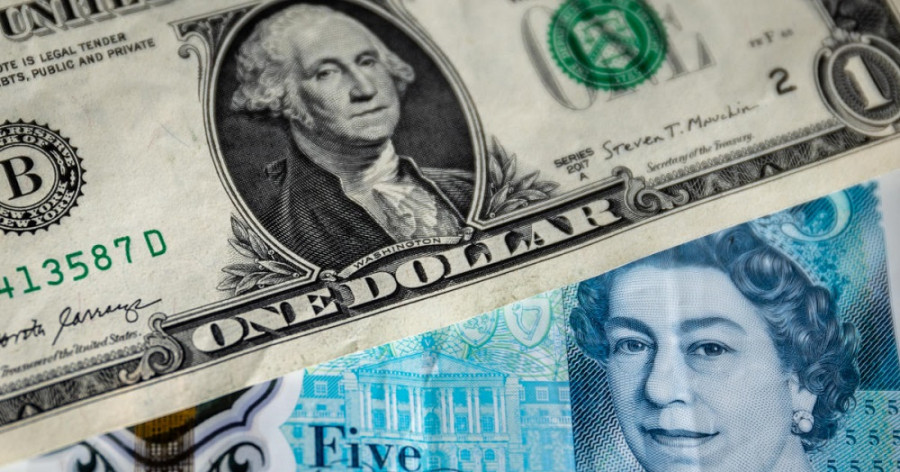
The pound is falling against the US dollar, amid rising risk-off sentiment and increased demand for the safe-haven greenback. At the end of last week, GBP/USD buyers were actively rebuilding their positions, primarily due to the decline in the US Dollar Index. However, recent events in the Middle East have muddied the waters, and the US dollar continues to be favored in the market. The news landscape is supporting the dollar's strength, while the pound is forced to follow suit.
Looking at the weekly chart, we can see that last week ended on a positive note for the British pound for the first time this fall. In September, the pound suffered its largest losses in 12 months, with the month's high at 1.2712 and the low at 1.2109. Such an impressive result (a 600-point move in just a few weeks!) was achieved not only by the dollar's broad strength but also by the pound's weakness, based on expectations that the Bank of England will conclude (or has already concluded) its cycle of monetary policy tightening.

Excessive market expectations undermined the British currency. This didn't happen overnight, but rather in the second half of the summer. Take a look at the monthly GBP/USD chart – the pair reached this year's peak (1.3141) in July, afterwards the pair reversed course and fell by more than a thousand pips. This was largely due to the excessive expectations.
At the beginning of the summer, the market saw the BoE's peak interest rate at 6.5%. Such bold forecasts were supported by inflation data – inflation in the UK appeared more stable compared to other developed countries where the situation with price growth improved more rapidly. However, in August, BoE officials unexpectedly softened the tone of their rhetoric, emphasizing the side effects of aggressive policies. Hawkish expectations significantly weakened (putting pressure on the pound), while in September, the fears of most experts were realized – for the first time in the last 14 months, the BoE kept the rate unchanged.
The latest inflation report mounts pressure on the pound. In particular, the core Consumer Price Index, which excludes energy and food prices, dropped sharply to 6.2%, while the consensus estimate was a fall to 6.8%. Meanwhile, in the two preceding months, the core CPI had been at 6.9%. The annual index also entered the "red zone," standing at 6.7% (the forecast was at 7.0%). This is the slowest pace of growth since February 2022.
Following the September meeting, many currency strategists concluded that the 5.25% interest rate would be the peak value in the current cycle. In their opinion, the pause that was declared last month would be indefinite – the central bank could still resort to another rate hike but only if inflation starts to pick up steam again. These conclusions sharply contrasted with the summer expectations (raising the rate to the 6.5% target). Such a sharp shift in sentiment affected the British currency.
It's worth noting that the Federal Reserve's interest rate hike this year is also in question, especially in the context of the November meeting. Much will depend on the dynamics of U.S. inflation in September and October. Key inflation reports for September, including the Consumer Price Index and the Producer Price Index, will be published on Thursday and Friday. If they arrive in the "green zone," the probability of another rate hike in November will increase from the current 12% to 40-50%. But if the indicators meet consensus estimates (not to mention the red zone), this probability will drop to zero. In such a case, dollar bulls will pin their hopes on the December meeting.
Currently, the pound is forced to follow the greenback because it has no arguments to fuel its growth. The next BoE meeting is almost a month away (November 2), and the current rhetoric of BoE officials does not signal another rate hike. The oil market, which is currently growing actively due to events in Israel, could play the role of a "black swan," accelerating inflation growth – but it is too early to say.
In my opinion, in the coming days, the GBP/USD pair will mirror the trajectory of the US dollar index, which in turn will react to the rise/fall of risk sentiment in the markets. Obviously, in the current conditions, geopolitical events will set the tone for trading, instead of economic and fundamental events. Further escalation in the Middle East will increase demand for the safe-haven dollar. And judging by the recent statements/actions of major actors in the Middle East region, this scenario seems to be the most likely.